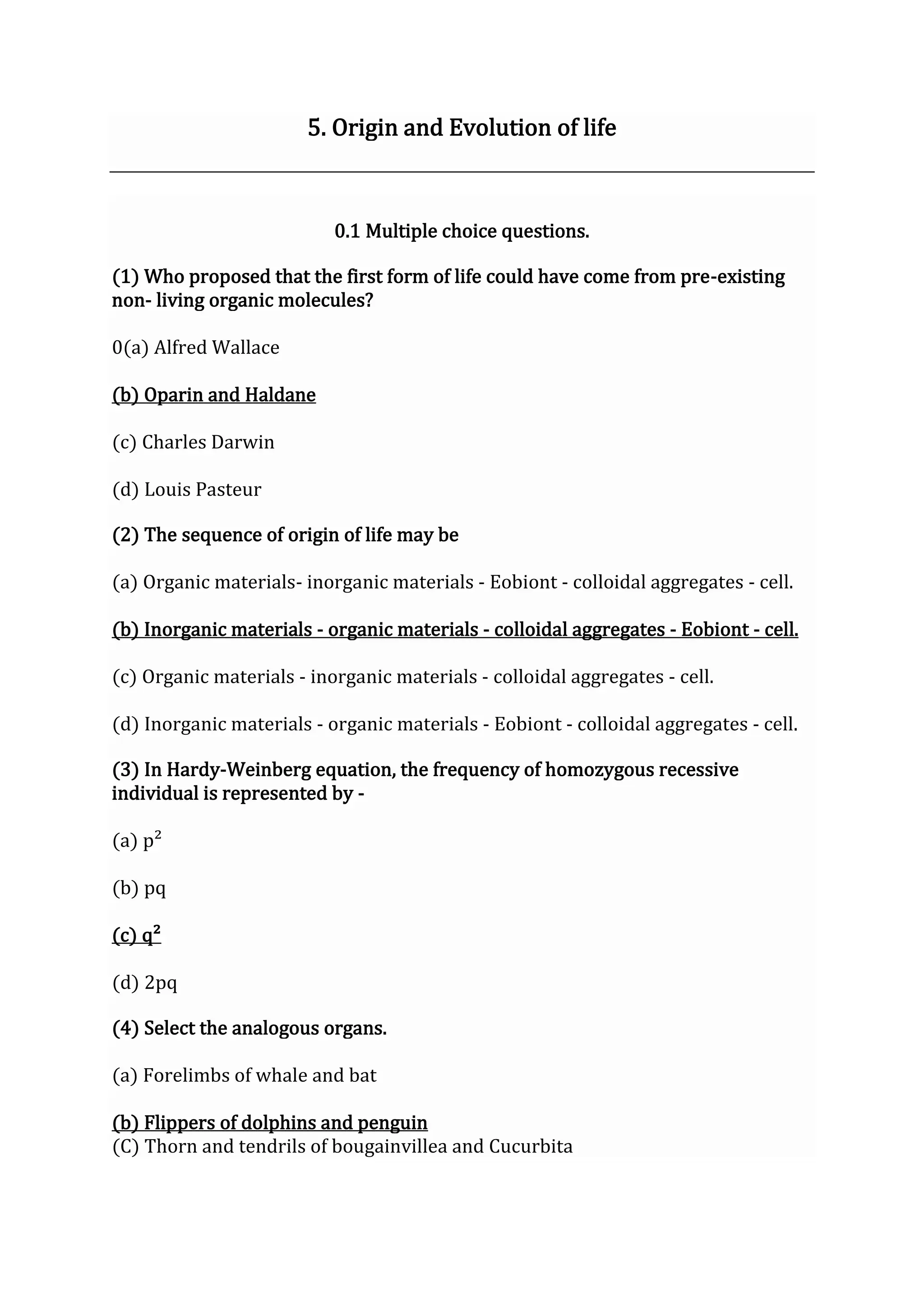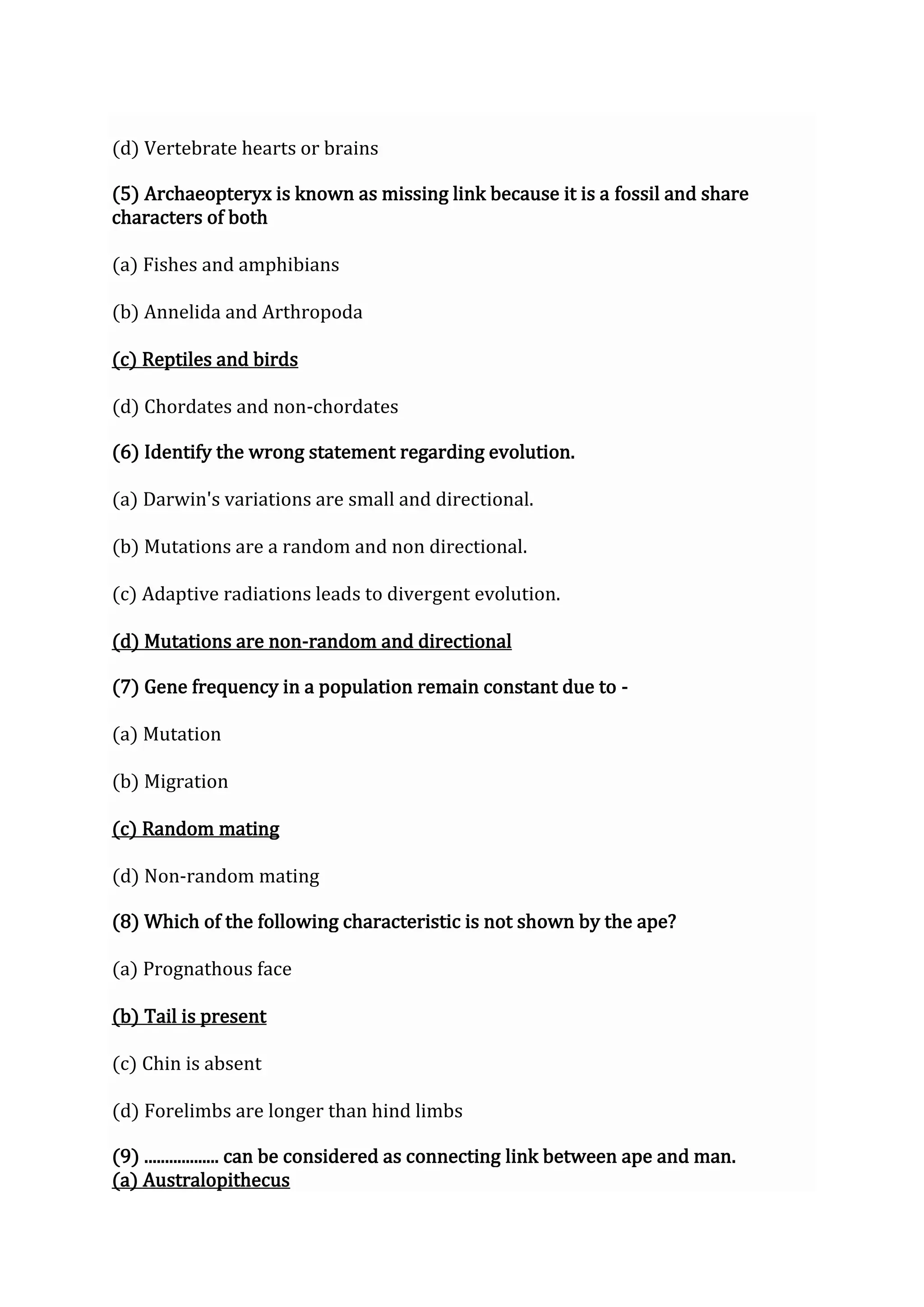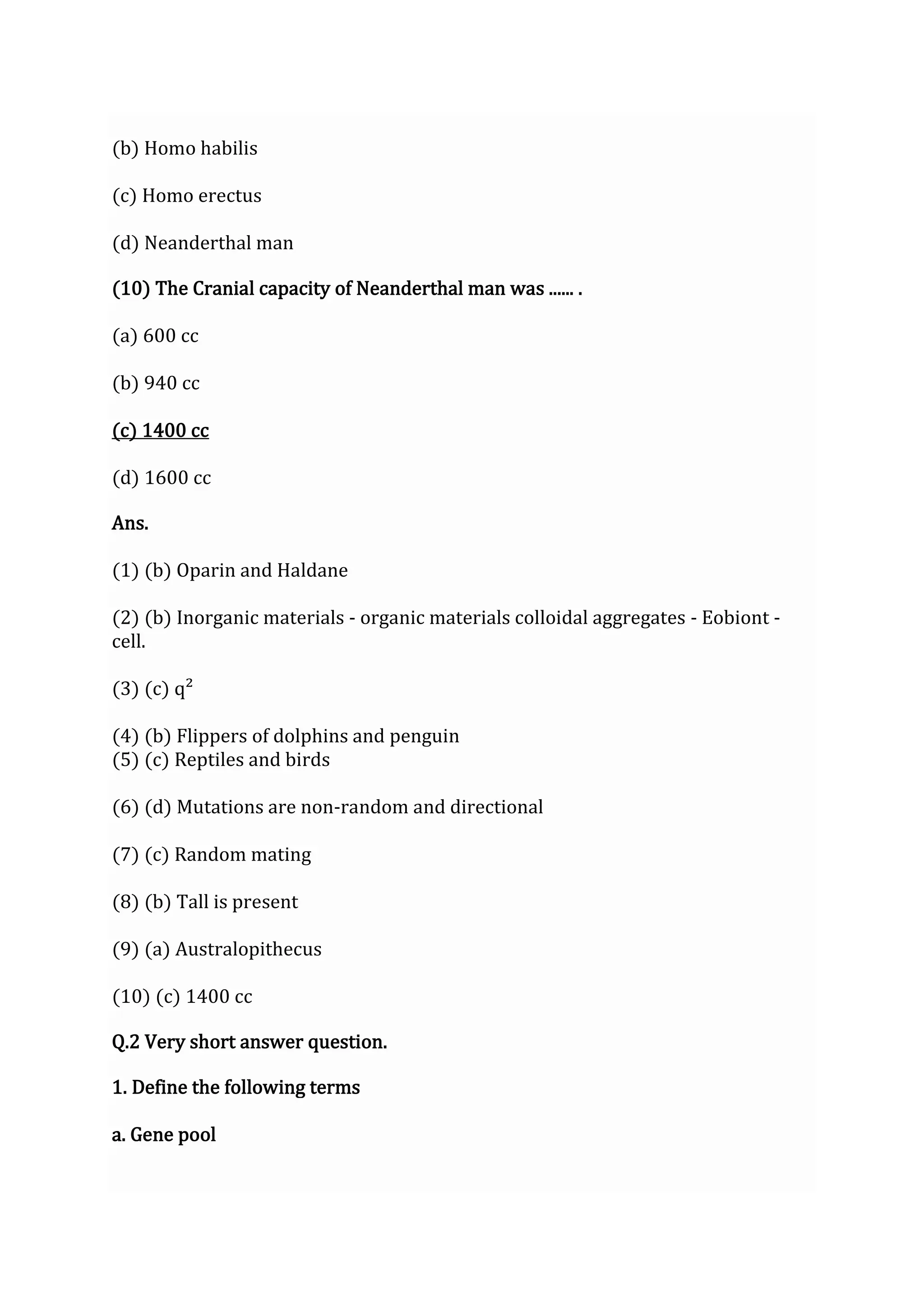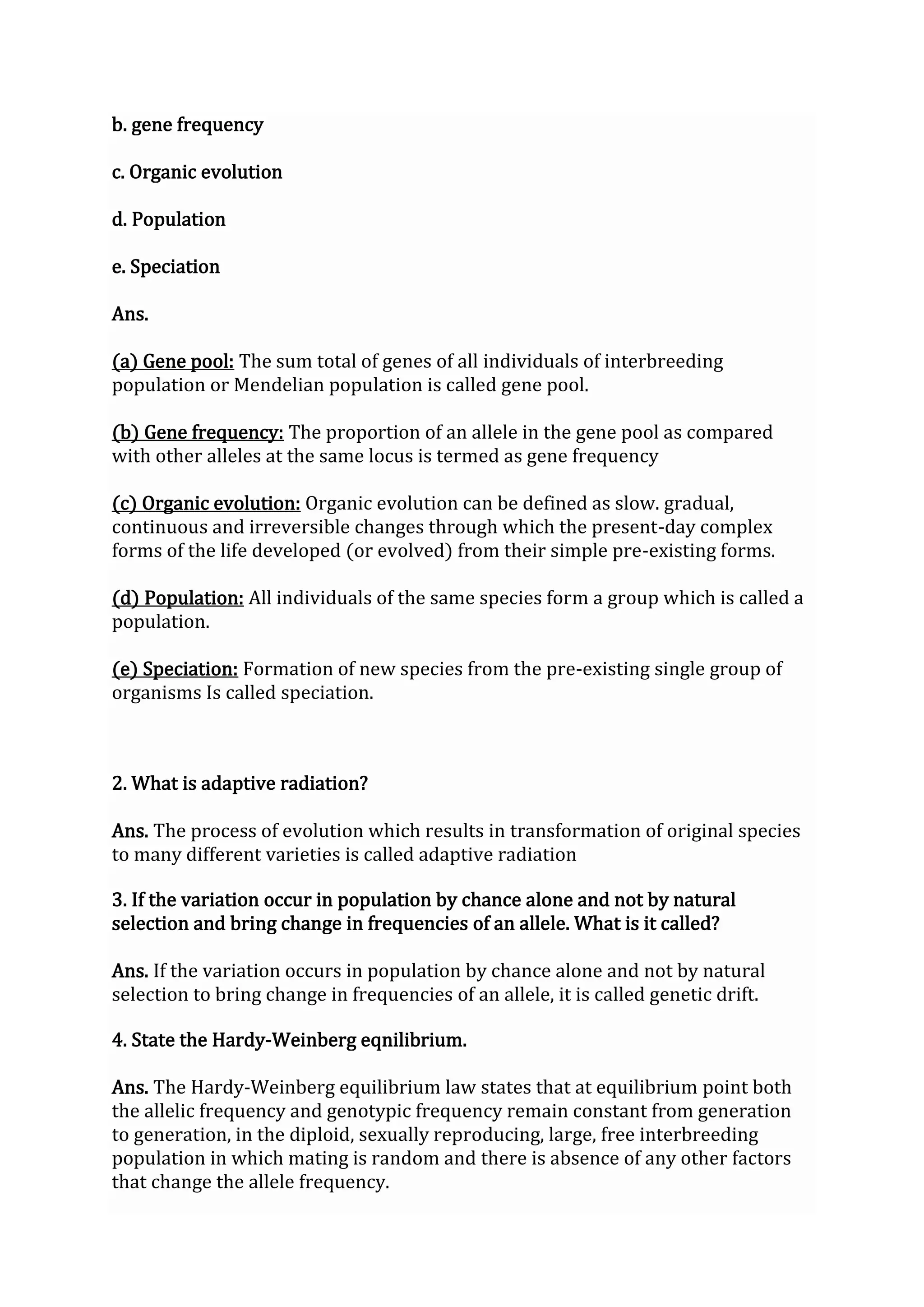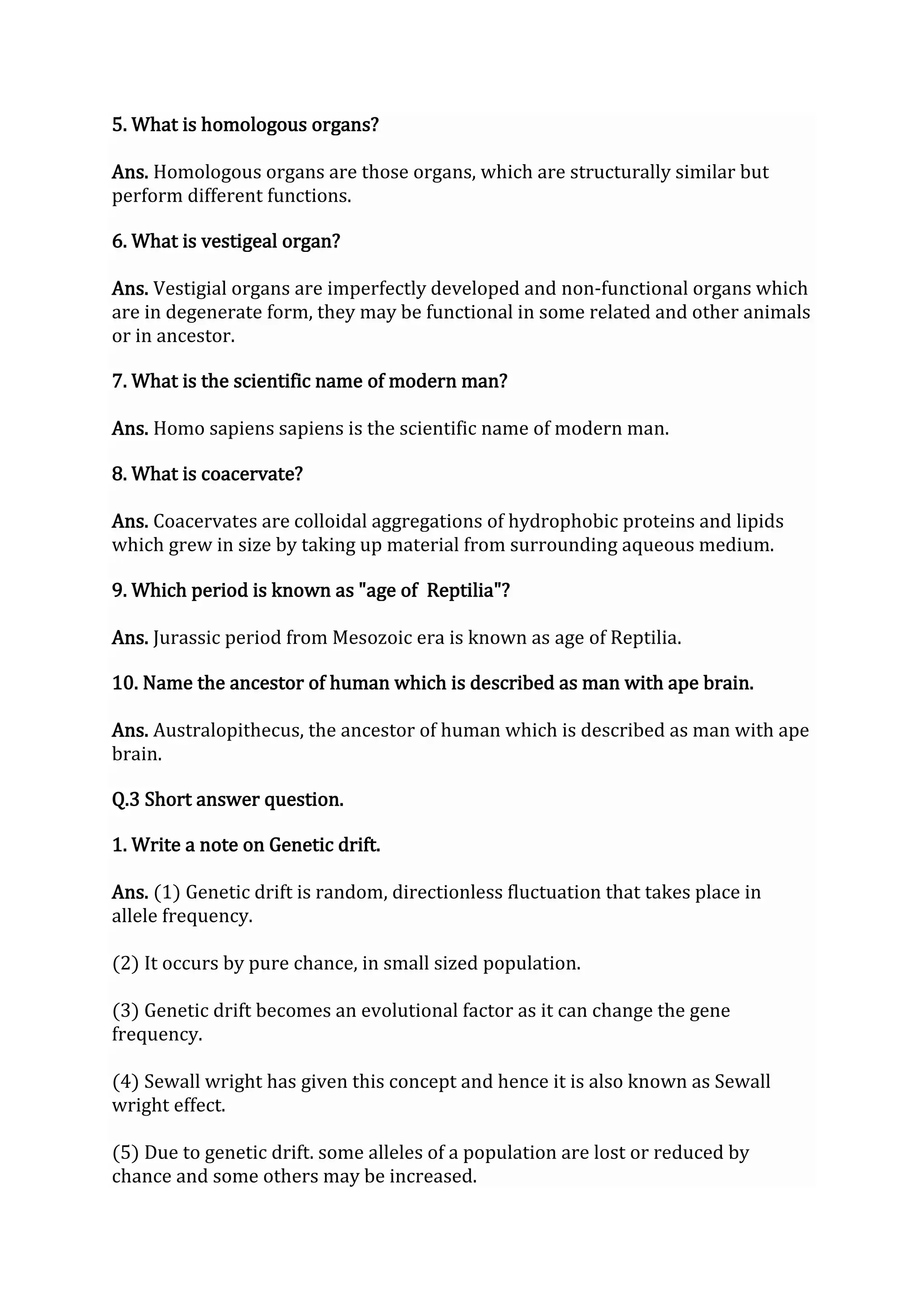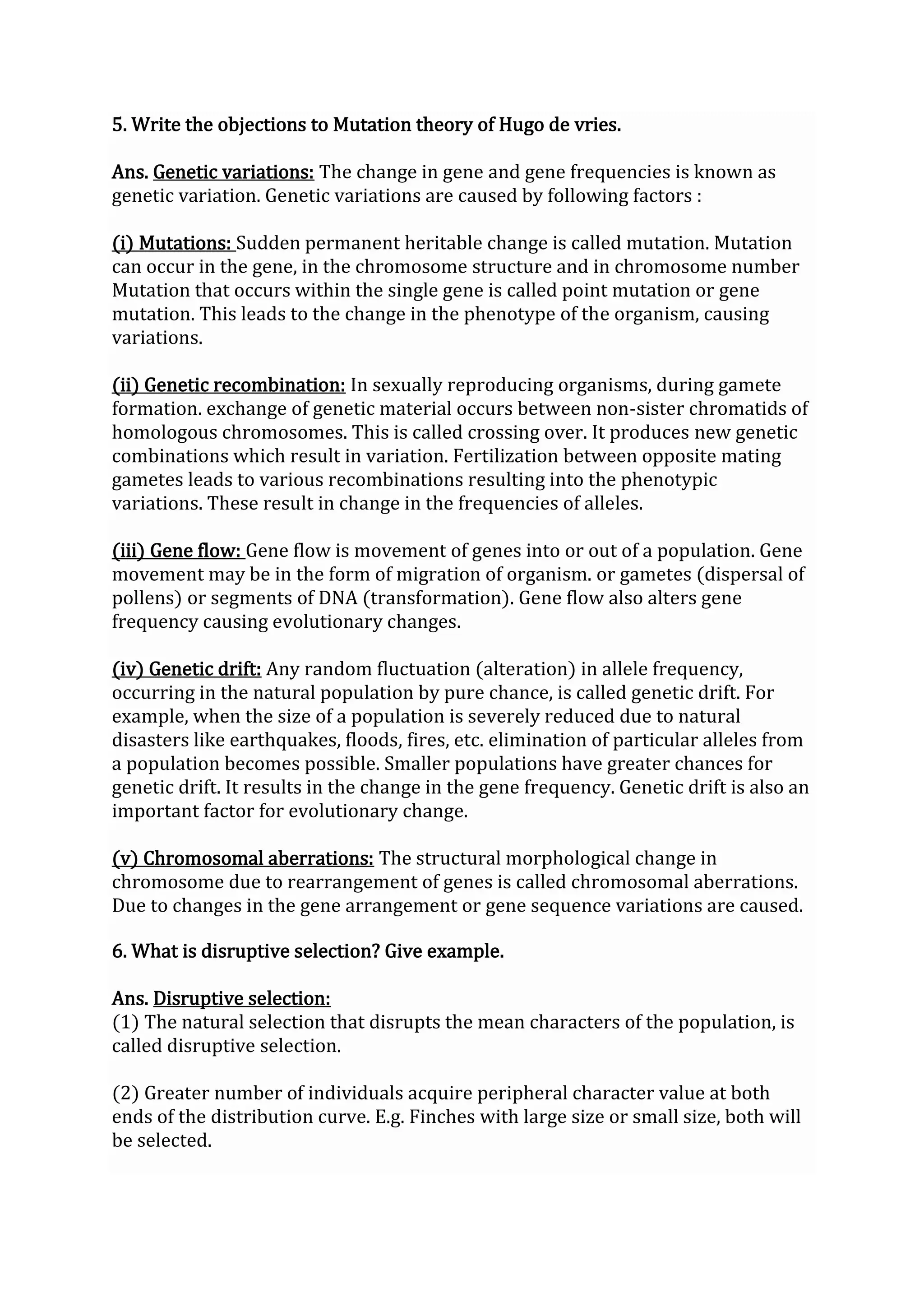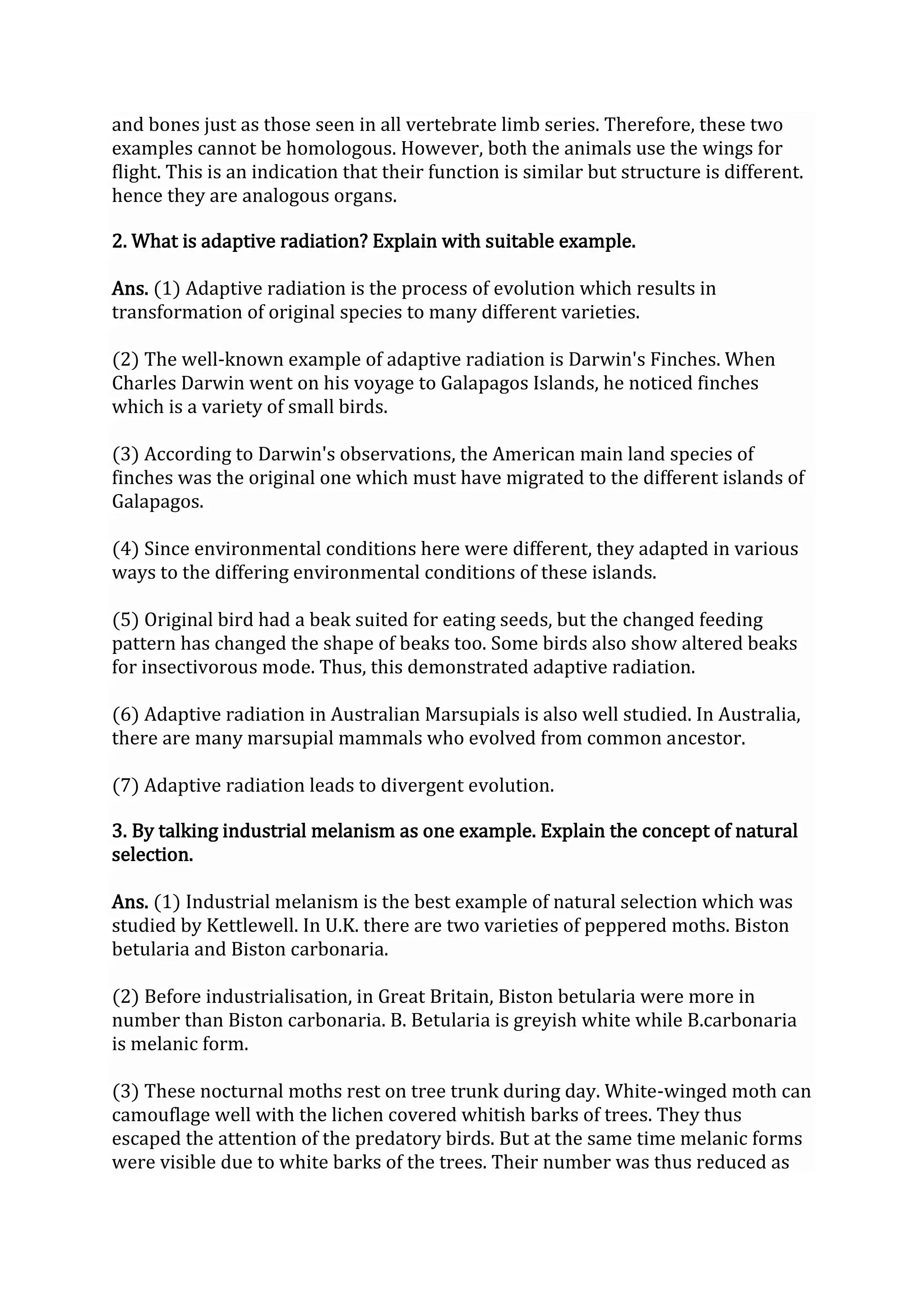The document contains 10 multiple choice questions about topics related to evolution and life origins. It also includes short answer questions defining key terms and explaining concepts like genetic drift, adaptive radiation, and disruptive selection. Finally, there are long answer questions about homologous vs analogous structures, examples of adaptive radiation, natural selection and industrial melanism, the Miller-Urey experiment, and types of reproductive isolation.
